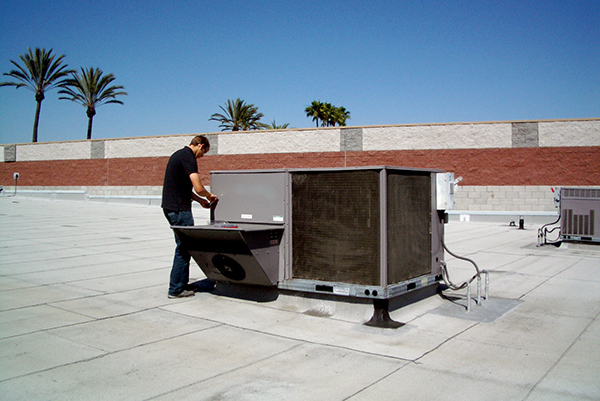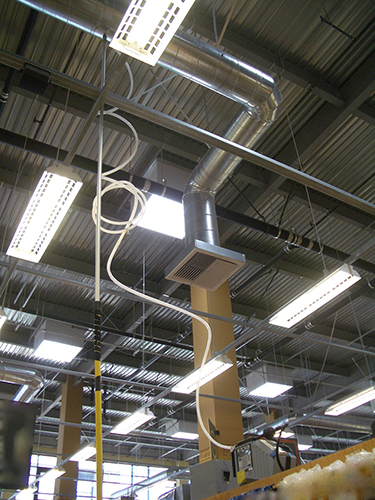Air Quality and Ventilation Energy in Commercial Buildings

Building Ventilation
Commercial buildings include offices, schools, hospitals, retail stores among other uses; and the quality of the air in those buildings. Our group conducts research to measure contaminant levels and source strengths in varied building types, including offices, classrooms, retail stores. We have conducted studies to quantify the impact of ventilation rates on human outcomes, including perceived air quality, intensity of building-related symptoms, cognitive performance and productivity.The commercial building sector is an important part of our highly organized and complex society.
Heating, ventilation, and air conditioning (HVAC) of commercial buildings represents 29% of their total on-site energy use, and thus represent an important target for energy savings. Ventilation standards for commercial building are intended to ensure that sufficient air exchange with outdoors is provided so that indoor environmental conditions are adequate for the health and comfort of human occupants. The expectation is that these conditions will allow building occupants to live and work to their full potential, facilitating performance and associated productivity. Thus, understanding the amount of ventilation needed by the building occupants is a crucial aspect of managing our energy future.


EnergyPlus-Multizone modeling
Our group uses EnergyPlus and airflow network models (e.g., CONTAM) to simulate ventilation energy use of commercial buildings under different usage scenarios. We have used this tool to evaluate energy-efficient ventilation solutions for schools and office buildings. This capability allows us to simultaneously consider energy use and impacts to indoor air quality.
Efficient and Healthy Schools Program
 The U.S. Department of Energy's Efficient and Healthy Schools Program aims to engage K-12 schools to improve energy performance and indoor air quality, with a focus on practical solutions involving HVAC and other technologies. Since its launch in 2021, a growing network of schools, districts, and supporting organizations have joined the Program to access capacity-building support and free resources.
The U.S. Department of Energy's Efficient and Healthy Schools Program aims to engage K-12 schools to improve energy performance and indoor air quality, with a focus on practical solutions involving HVAC and other technologies. Since its launch in 2021, a growing network of schools, districts, and supporting organizations have joined the Program to access capacity-building support and free resources.
One featured case study from the Efficient and Healthy Schools Program is the Boston Public Schools (BPS). BPS implemented districtwide indoor air quality monitoring, allowing their facilities management to record and analyze real-time IAQ parameters. This data enable BPS to make informed decisions about ventilation improvements and operational adjustments.
